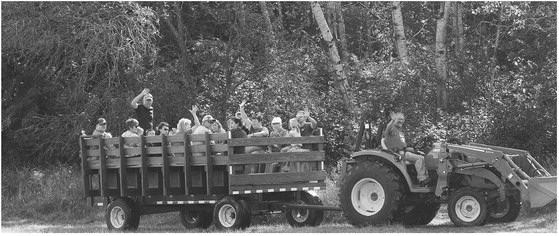Buy local, buy fresh: The real benefits of choosing Wisconsin potatoes
Though Wisconsin is well known for dairy, the state is fortunate to grow an impressive variety of crops. In addition to being a leading producer of tart cherries, cranberries, beets, sweet corn, and a number of other vegetables, Wisconsin ranks third in the nation for potato production and — with two western states (Idaho and Washington) taking the top spots — is the top potato-producing state east of the Mississippi. Despite this local bounty, only a small percentage of Wisconsin’s food dollars (estimates are in the single digits) stay within the state, indicating that the rest are spent on products sourced outside of Wisconsin. With such rich abundance in our own backyard, there is ample opportunity to shift this imbalance, and this wholesome local produce nourishes consumers in more ways than one. Choosing locally-sourced potatoes is a simple way for Wisconsin consumers to adopt more sustainable consumption patterns while supporting the local economy and nourishing community resilience.
Wisconsin RDNs have a unique role to play in the ecosystem of healthy living, influencing both individual health choices and community wellness. Whether counseling individuals or making menu and sourcing decisions in foodservice settings, RDNs can help cultivate sustainable consumption patterns and foster “sustainable, resilient, and healthy” food systems by encouraging the use of locally-sourced produce, including Wisconsin potatoes.
Choosing Wisconsin potatoes nourishes the community in more ways than one:
Environmental Benefits
For consumers looking to reduce their carbon footprint, buying local just makes sense. Purchasing fare grown nearby substantially reduces food miles — the distance food travels from farm to table — and the resulting greenhouse gas emissions from transportation. Buying local also helps keep farmland productive, preserving open spaces and preventing urban sprawl.
A preference for locally-grown potatoes also lends support to the Wisconsin Healthy Grown program, an elevated sustainability standard introduced by local growers in the late 1990s. Program participants meet strict research- based sustainability standards related to water and soil conservation and pest management and are certified annually by a third-party. The program also supports farmers in implementing practices that protect pollinators and restore native ecosystems. In essence, buying local supports a farming community committed to preserving the environment and producing high-quality, nutrientrich potatoes.
In 2012, Adam and Carrie Flyte partnered with Adam’s grandfather to rescue 500 acres of fallowed farmland — and created Flyte Family Farms. Today, they farm over 4,000 acres with their three children and participate in the Wisconsin Healthy Grown program. In Carrie’s words, “It is important to us as growers to produce high-quality, healthy food that we would feed our families. We practice that tradition by eating what we grow and following researchbased sustainability standards.”
Economic benefits
In Wisconsin, potato farming is a heritage. Many operations are multi-generational family farms. Keeping food dollars local supports these farms and farm families, but that’s just the beginning. Buying local helps ensure that growers earn a fair return, strengthening their businesses and allowing them to employ more rural workers. Farmers, in turn, reinvest their dollars locally, boosting the economy, further strengthening the rural workforce, and supporting neighboring businesses that the farming community relies on.
Rod Gumz co-owns a fourth-generation family farm with his brother, Richard. They grow onions and red potatoes in the rich soils of South Central Wisconsin. Specialty crops like those grown by Gumz Farms generate $6.4 billion in economic activity and — directly or indirectly — are responsible for 132,000 jobs in the state. For Gumz, reinvesting in the community is second nature. “[We do] business locally and reinvest in the region, working with area contractors, suppliers, and professionals.” The way he sees it, “It’s a cycle of support that benefits everyone.”





